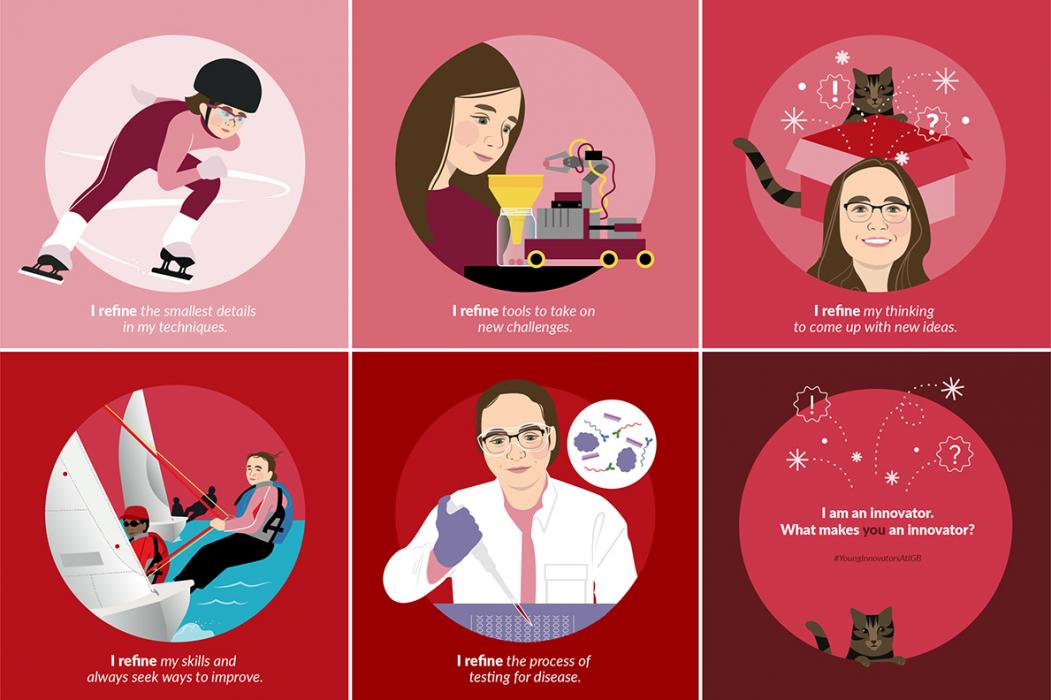Young Innovator Program Spotlight: Skye Shepard

Skye Shepard / Eleanor Grosch
Skye Shepherd is a graduate student in the Cunningham (CGD/MMG) group, where she develops new detection tools for proteins that can be used to identify diseases including cancer, cardiovascular abnormalities, and traumatic brain injuries. Shepherd won first place in the 2022 Young Innovator Program and was awarded $20,000 to advance her project.
When did you first become interested in science?
SS: Although I had always been interested in math and robotics, I didn't know that I wanted to go into STEM until late high school. My physics teacher inspired me. He took us to Fermilab and we were able to talk to the scientists there. It was exciting to see how physics experiments in the past could figure things out without having sophisticated technology.
What other science memories do you have?
SS: I was involved with my middle school robotics team. We built little robots that needed to complete many tasks, like picking up blocks and putting them in a specific place, in a given amount of time. We built everything from scratch and that was really fun.
Why did you pursue engineering?
SS: It’s sometimes harder to find applications with less engineering-based sciences. I think they are very interesting from a scientific standpoint, but in engineering you have more chances to apply your work to products that will be used in everyday life.
What drew you to the University of Illinois?
SS: I was born here; my mom was a graduate student in neuroscience and she went to medical school at the university. Also, my brother graduated from the Department of Computer Science. For graduate school, your lab and your advisor are the most important parts, so that's what finally drew me here. I really like Urbana-Champaign. You get the opportunities of a big city but the feel of a small city.
What do you work on in your lab?
SS: My work focuses on detecting proteins rapidly without requiring complicated lab equipment. My lab works on biosensors, which is a rapidly growing field. It's getting to the point where you can walk into an emergency room and test for a wide range of disorders. It’s exciting to see.
How has the Young Innovator Program’s funding helped you in the past year?
SS: I have been working on amplifying microRNA, which are short nucleic acid sequences that are of interest in various diseases. The program has given me the funding to apply that same assay to detect proteins, which are biomarkers of interest in medicine, healthcare, and biology.
What is your favorite part of being a scientist?
SS: I like the opportunities and the collaborations. Our lab is unique because half the people are electrical engineers and the others are chemists and bioengineers. Being able to see the perspectives and ideas that people bring from their different backgrounds is really cool.
What advice do you have other inventors?
SS: Start with what doesn't work well. It's much easier to address something that is nonfunctional than it is to try to improve on something that is already working well. Also, be stubborn and persistent. My current project has been stuck for about two years and we're making progress every day.
What are your interests outside lab?
SS: I really enjoy sailing; during the summers, I go to Clinton Lake and sail. Sailing is a good sport for inventors because the conditions and the boats are always changing. In the winters, I coach the speed skating team here. It's a really cool sport from a physics and form point of view. The most powerful or athletic person doesn't win, it’s the person with the best form. I also spend time with my cat, Geo, that I adopted from the College of Veterinary Medicine.
